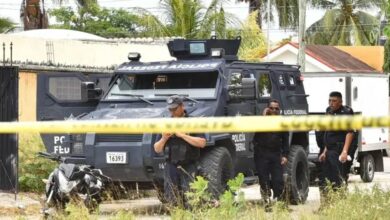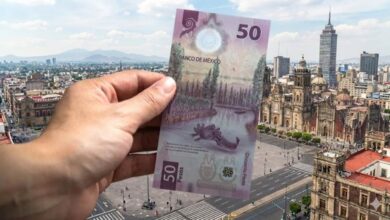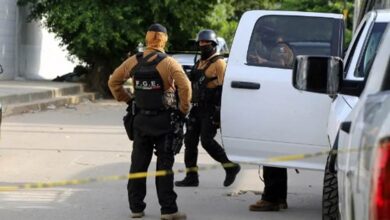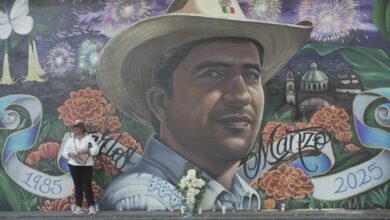Rediscovered Jungle Fortress in Chiapas Revives Maya Resistance to Spanish Conquest
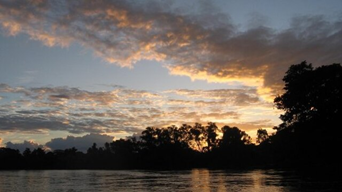
Half-buried beneath vines and centuries of silence, a lost Maya stronghold has resurfaced in the Lacandon jungle—its crumbling platforms and white-plastered walls telling the story of a rebel city that held off Spanish conquest for more than 100 years.
From Mission Records to Satellite Shadows
The city was never supposed to be found again. After its fall in 1695, the Spanish renamed it Nuestra Señora de Dolores, then abandoned it to the forest. Over time, the trees swallowed its walls, the rivers shifted, and the very memory of its location blurred into myth. For generations, the Maya city known as Sak-Bahlán—”Land of the White Jaguar”—lived only in colonial fragments: a friar’s letter, a soldier’s complaint, vague coordinates in yellowing ledgers.
But archaeologist Josuhé Lozada Toledo wasn’t ready to leave it there. With a laptop and a deep familiarity with sixteenth- and seventeenth-century troop movements, he began re-reading those reports with a modern twist. Using colonial accounts of marches—how long soldiers walked, how fast they traveled under tropical conditions—Lozada layered those paths over digital topographic maps.
He found a promising target: a remote stretch near the confluence of the Jataté and Ixcán rivers, just shy of the Guatemalan border, deep inside the Montes Azules Biosphere Reserve. “I marked a single point,” he said in a statement from Mexico’s National Institute of Anthropology and History (INAH). “And months later, we were standing exactly there, among stones that hadn’t seen daylight in centuries.”
Into the Jungle, Toward the Ruins
Reaching the site was less digital and far more grueling. The team had to haul gear on mules, wade across flooded rivers, and cut through dense undergrowth with machetes. For days, they trudged through sticky heat and tropical downpours, crossing terrain where even animals struggled to pass.
“The hardest field trip of my life,” Lozada admitted. But the hardship paid off. In one small clearing after another, the city began to reveal itself: stone platforms, fragments of ceramic vessels, and obsidian blades that sparkled beneath damp leaves. Two field seasons of mapping have since confirmed that the site matches Spanish accounts: a central ceremonial plaza, perimeter earthworks, and defensive walls—all consistent with a rebel capital built for both ritual and resistance.
Radiocarbon dating of charcoal remains from household hearths places the city’s peak between the late 1500s and early 1700s—the exact window when the Lakandon-Ch’ol Maya fled Spanish advances and rebuilt deep inside the jungle.

A Century in Hiding: The Last Free Maya
The Lakandon-Ch’ol were not new to resistance. They had been traders, scouts, and, when needed, guides who sometimes misled Spanish expeditions in the forest. When their capital, Lacan-Tun, fell in 1586, survivors didn’t surrender—they vanished. By foot and by canoe, they retreated into the jungle and built Sak-Bahlán, a sanctuary city that would remain free for over a century.
They were more than just holdouts. In Sak-Bahlán, they reestablished temples, planted cacao, and controlled rivers with strategic palisades. They defied colonial tribute, resisted Christian missionaries, and developed a reputation for unyielding defiance. “The last free Maya,” one colonial administrator called them in frustration.
That freedom finally cracked in 1695, when a Spanish force led by Fray Pedro de la Concepción, supported by both soldiers and Christianized Maya allies, found the city. His journal tells of white walls gleaming through the jungle, and of a tense negotiation that quickly unraveled into violence. By 1721, Spanish records note the city as once again abandoned. Its people had dispersed—some folded into mission towns, others vanishing deeper into the forest.
Why Sak-Bahlán Still Matters
Finding Sak-Bahlán doesn’t just fill a blank on colonial maps. It challenges long-held assumptions about how Indigenous communities resisted—not as vanishing relics, but as agile survivors who adapted their environments and incorporated pieces of the invading world into their strategies.
Claudia Trejo, an INAH anthropologist helping analyze the site’s materials, notes that what the team is uncovering “isn’t frozen tradition.” It’s improvisation: Maya architecture was reshaped for military needs, with causeways that funnel toward river exits, and Spanish glass beads and musket parts were found side by side with Maya ritual objects.
In a country where modern-day Maya communities are still battling for land rights, water access, and historical recognition, Sak-Bahlán offers more than academic value. It’s a reminder that resilience is not new. It has roots—deep ones.
Already, local Lacandon elders have embraced the find. At community meetings, they’ve shared oral traditions of a forest refuge called Sak-Bahlam, passed down for generations. For them, this is not just a rediscovery—it’s a return.
But the jungle still holds threats. Looters and illegal loggers operate within the Montes Azules Reserve, and archaeologists worry that the site could be compromised before it’s fully mapped. Efforts are underway to preserve the site using drone photogrammetry digitally, and a request for protective status is being prepared for state and federal authorities.
For now, the jungle continues to keep its secrets. But one has been wrested from the trees—a city that dared to stand alone, defiant, for over a century—a city built by people who refused to disappear quietly.
Also Read: Guatemala’s Jungle Tubs Keep Jaguars Cool When the Forest Dries
Sak-Bahlán isn’t just a rediscovered site. It’s a place where the myth of conquest ends, and the memory of resistance begins again. The White Jaguar has stirred. And for a new generation, its tracks lead not to defeat, but to survival.

